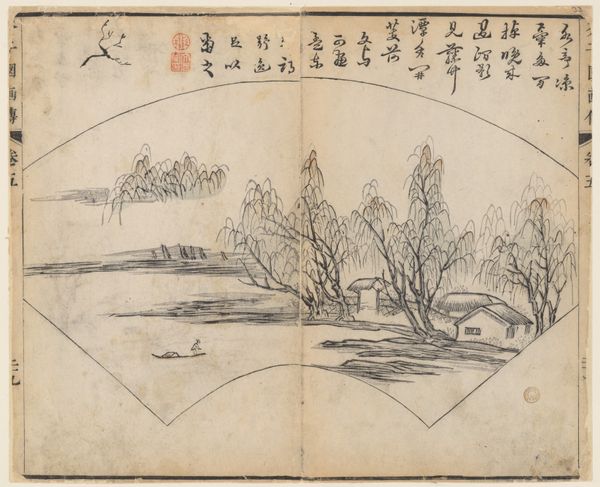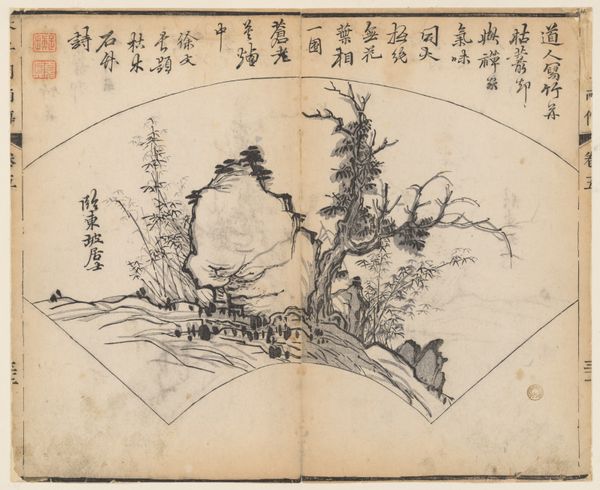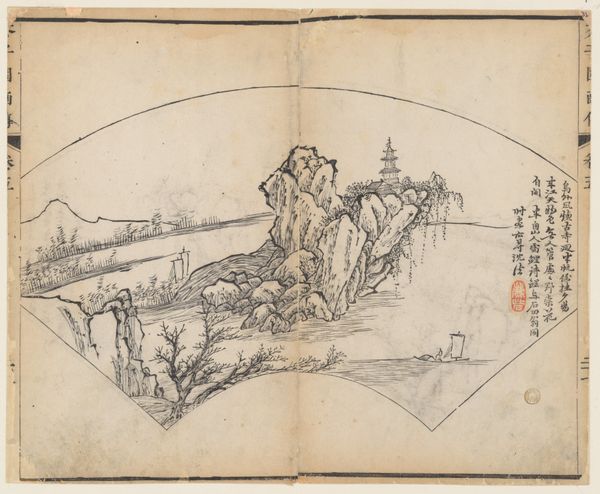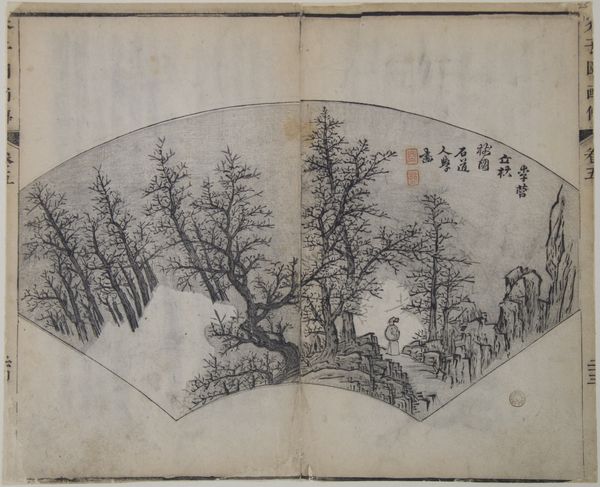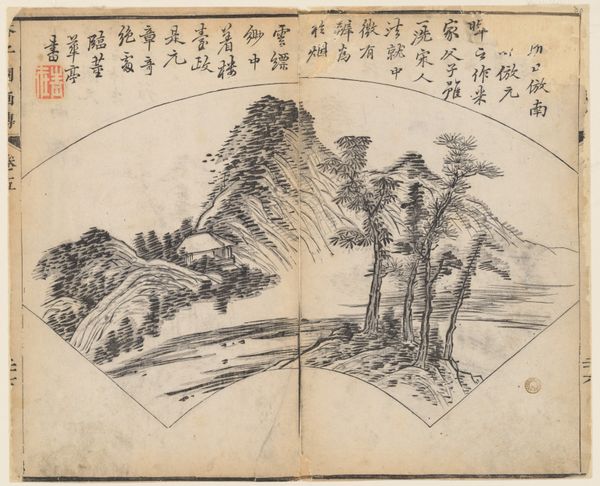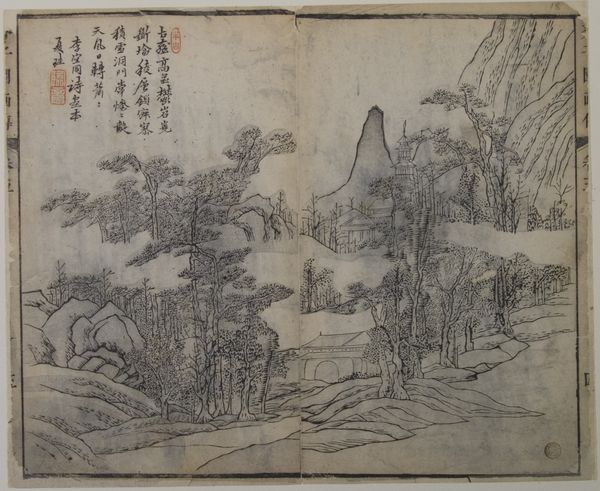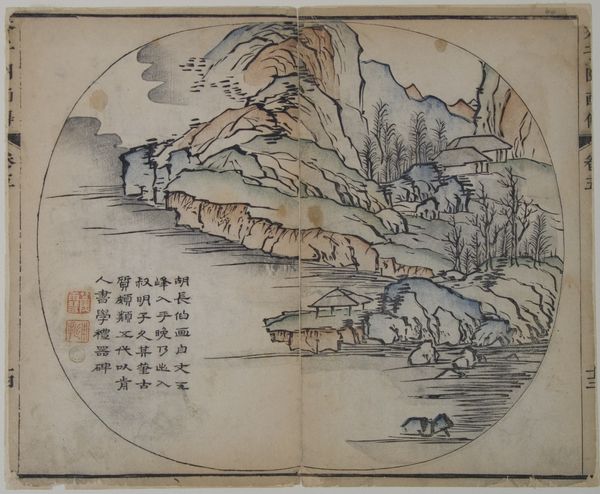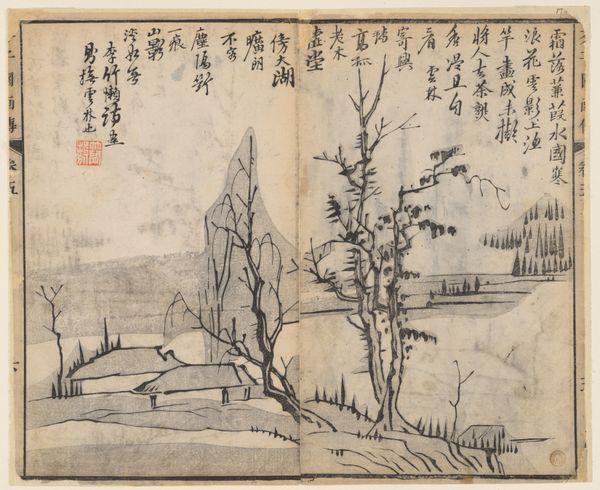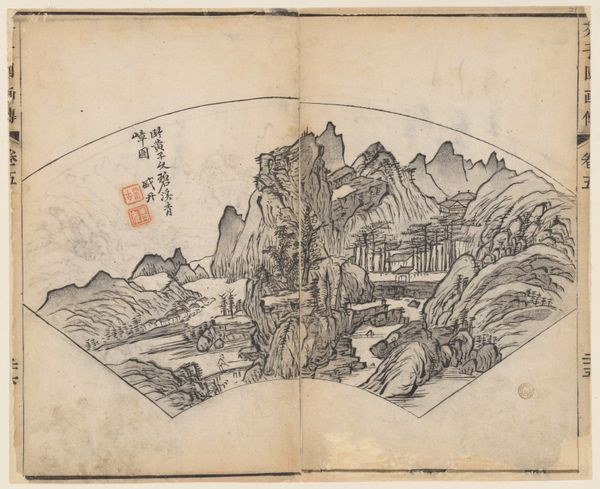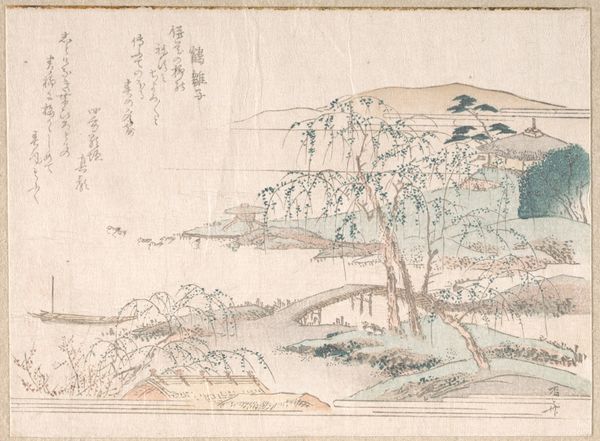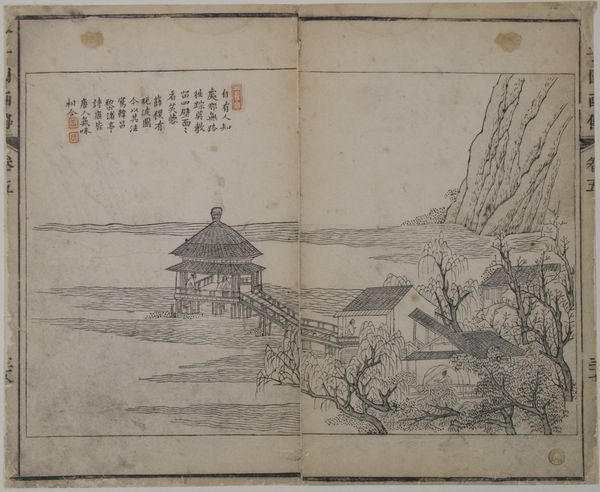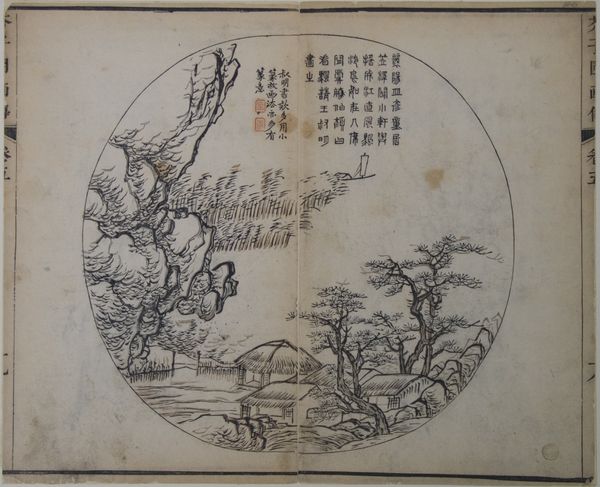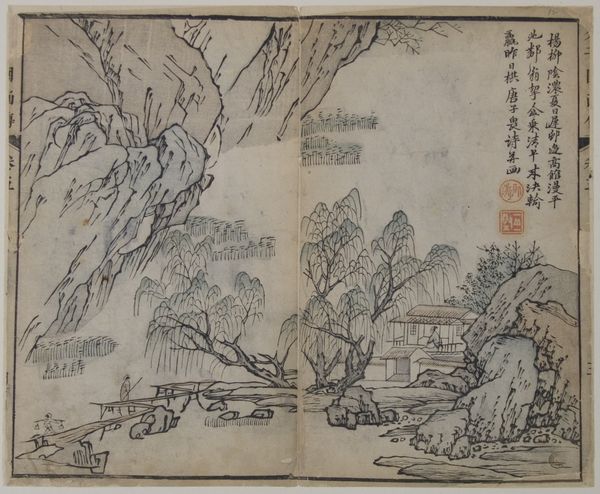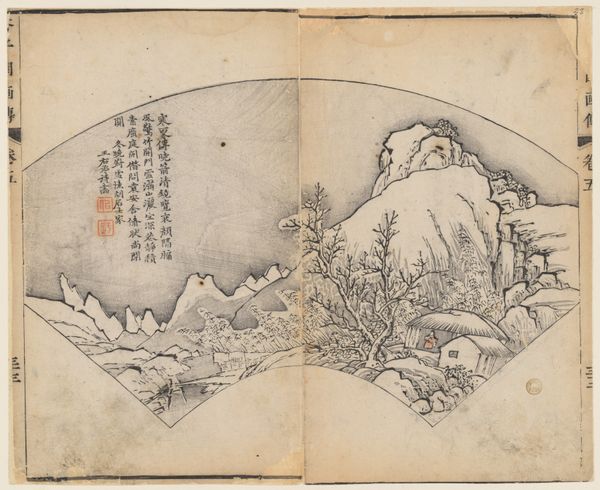
drawing, print, paper, ink, woodcut
#
drawing
# print
#
asian-art
#
landscape
#
paper
#
ink
#
woodcut
Dimensions: 9 5/8 x 11 13/16 in. (24.4 x 30 cm)
Copyright: Public Domain
Curator: Let’s turn our attention now to a page from the Mustard Seed Garden Manual of Painting. Published in 1679, this print and ink woodcut on paper is attributed to Wang Gai. You can find it here at the Metropolitan Museum of Art. Editor: Ah, what a wonderfully tranquil scene. It almost feels like a stage set, a delicate paper fan unfurling to reveal a glimpse of rural life. Simple, serene. Curator: Indeed. It was conceived less as art in its own right and more as an instructional guide. Manuals like these offered aspiring artists patterns and models to imitate and adapt, reflecting and reinforcing established aesthetic values. Editor: I get that it's a guide, but there’s a certain spirit to it. See how the trees weep, how the distant hills blur? The ink bleeds slightly; imperfections somehow make it feel alive. Did artists really learn to replicate this kind of… spontaneous emotion? Curator: They aimed to, yes. Reproduction wasn't meant to be literal, though. By mastering these techniques, artists sought to internalize classical forms, and from there to communicate moral and philosophical ideals. Landscapes in particular weren't just scenery, but rather expressions of harmony between humanity and nature. Editor: Interesting, the way something so clearly based on a pre-existing set of ideas still has the capacity to surprise. The two small figures in the corner—are they also meant to be symbolic? Curator: Quite possibly. They could represent travelers or scholars, maybe hinting at themes of journey, contemplation, the search for enlightenment within the natural world… The possibilities are really limitless. Editor: So, not just a painting, but a kind of meditation disguised as a lesson. Makes you want to pick up a brush, doesn't it? To see if you can also conjure something equally fragile and timeless. Curator: Well said. And that invitation to engage with the legacy of artistic traditions is ultimately what these manuals aspired to create. Editor: A good place to end, wouldn’t you say? Time to find our own little corner of nature, I think.
Comments
No comments
Be the first to comment and join the conversation on the ultimate creative platform.
